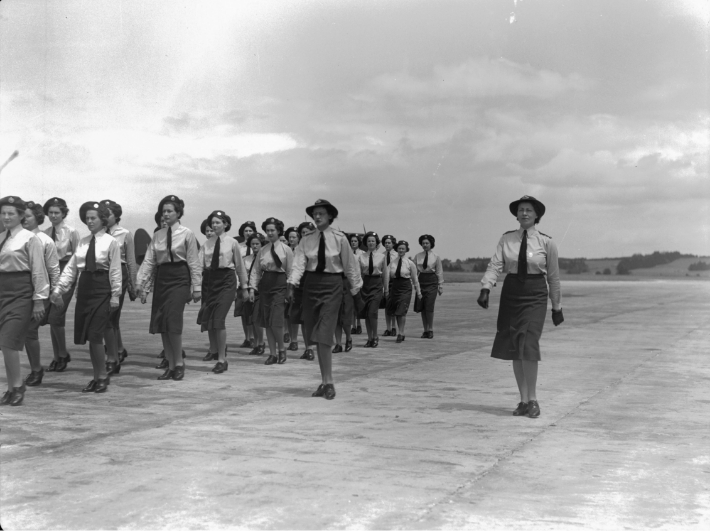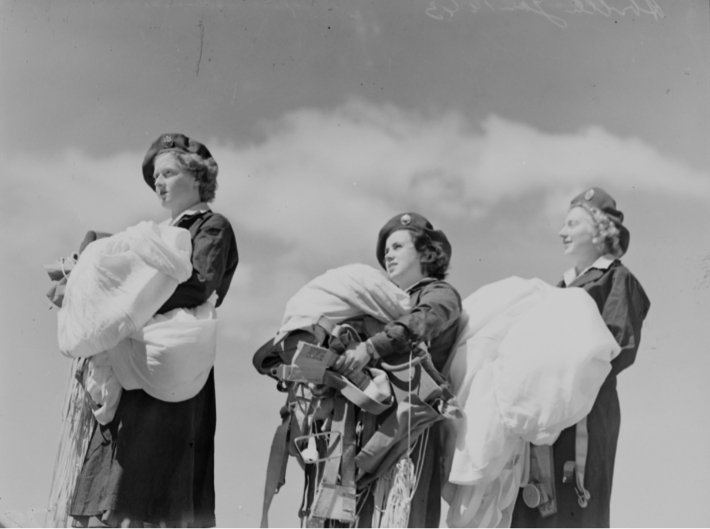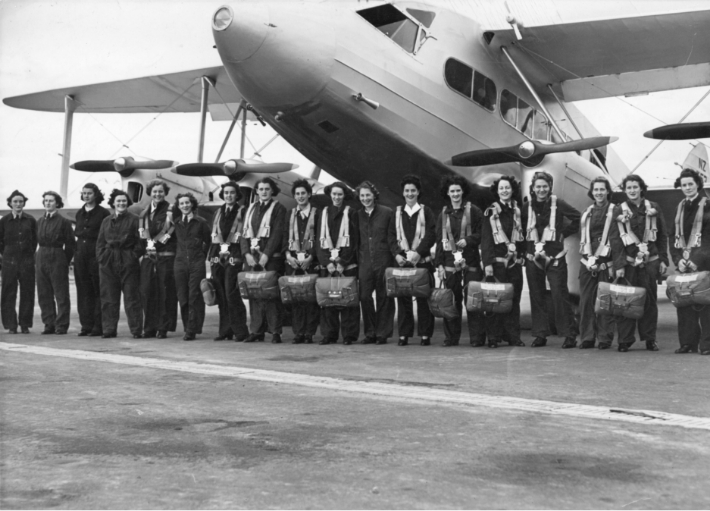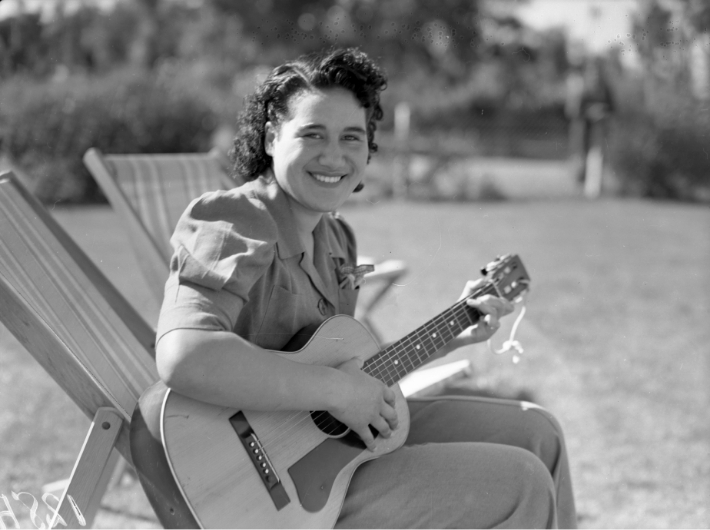WAAF: The Women’s Auxiliary Air Force during World War Two
Suitable for all ages
Atrium
Suitable for all abilities

The New Zealand Women’s Auxiliary Air Force (WAAF) was established on 16 January 1941. Its members – referred to as WAAFs – played a vital role in supporting the wartime expansion of the Royal New Zealand Air Force (RNZAF) by freeing men up for overseas service. It was the first of the women’s auxiliary services to be formed in New Zealand, with women’s Army and Navy auxiliaries established soon after.
WAAFs initially worked in a small number of traditional support roles such as cooks, typists, clerks and medical orderlies. As the war continued, WAAFs were increasingly employed in the technical trades which were highly skilled and required intensive qualifying courses. Some were commissioned as officers. In all, WAAFs served in 39 different trades.
WAAFs served on every major RNZAF station across the country. A few experienced overseas postings in Fiji and Norfolk Island. By the end of 1945, a total of 4, 753 WAAFs had been mobilised.
The number of WAAFs dropped significantly at the end of the war as men returned from overseas and took up peacetime air force roles. However, the value of women serving in the RNZAF had been clearly demonstrated, and in November 1947 the WAAF became a permanent part of the peacetime RNZAF.
The ground-breaking service of the wartime WAAFs paved the way for greater involvement of women in the RNZAF. In 1954 the WAAF was renamed the Women’s Royal New Zealand Air Force (WRNZAF), and was disestablished in 1977 when women were completely integrated into the RNZAF.

WhG1583-43, RNZAF Official
All WAAFs were volunteers, initially recruited by advertisements in the daily newspapers. Prospective recruits completed an application form and were interviewed by a Selection Committee. If they passed the strict entry requirements, they went on a three-week course of basic training where they received full instruction in military discipline, marching and drill. Then they were posted straight into their job or underwent further trade-related training.
The wearing of a uniform was an important aspect of recruiting WAAFs: a uniform was considered by many as a visible way to show commitment to the war effort.
In this image WAAFs march during a Wing parade, RNZAF Station Whenuapai, December 1943.

PR78, RNZAF Official
Demonstrating how capable they were, WAAFs took over more of the trades previously done exclusively by men.
In many trades, such as parachute packing, there was no room for error; the lives of air crew depending on the thoroughness and accuracy of the packers. Some of the many other jobs included instrument repairer, meteorologist, armoury instructor, hangar worker and motorboat crew. Some were commissioned and trained as cypher officers.
In this image, WAAF parachute packers carry aired parachutes at RNZAF Station Hobsonville, circa January 1943. Believed to be, left to right, are Mona Harrison, Iris Jeyes and Joyce Caulton.

MUS03130
WAAFs were not trained as air crew, but occasionally flew as passengers. The only women taken for flights in the course of their work were those who attended the Wireless Course at RNZAF Station Wigram. They were taken up to observe wireless equipment in the air to better understand the problems of the air crew they would be exchanging signals with.
Whenever possible, WAAFs were flown in service aircraft when posted to other stations or went on leave.
This image shows the first course (held January-August 1942) of WAAF ground wireless operators, after their familiarisation flight in the Wigram Electrical and Wireless School’s De Havilland DH86 aircraft.

PR128a, RNZAF Official
It wasn’t all work for women in the WAAF. There were opportunities for recreation, relaxation, socialising and even vocational training to acquire skills they could use after the war.
It was believed that improvements in recreation would result in greater efficiency, so a qualified officer was appointed to organise WAAF leisure time activities. WAAFs participated in team sports like hockey and basketball, singing groups, attended dances, and took classes in art, handicrafts, hairdressing, dressmaking, shorthand typing and more.
In this image a Māori member of the WAAF plays the guitar during her leisure time in 1942.
Though ethnicity of recruits was not recorded, recent research from Otago University has identified 186 Māori women who served as WAAFs.
More to explore




